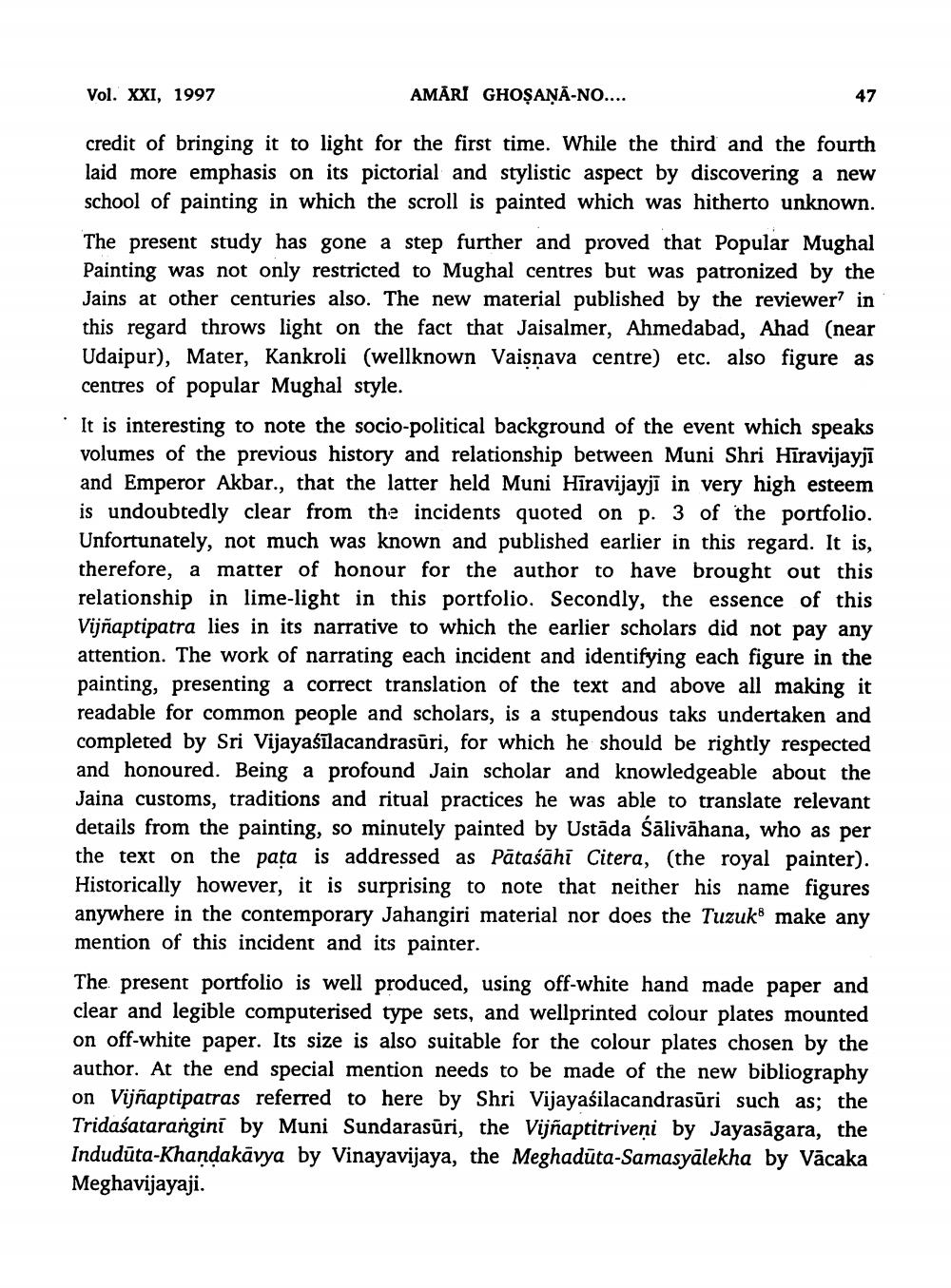________________
Vol. XXI, 1997
AMĀRI GHOŞAŅĀ-NO....
47
credit of bringing it to light for the first time. While the third and the fourth laid more emphasis on its pictorial and stylistic aspect by discovering a new school of painting in which the scroll is painted which was hitherto unknown.
The present study has gone a step further and proved that Popular Mughal Painting was not only restricted to Mughal centres but was patronized by the Jains at other centuries also. The new material published by the reviewer? in this regard throws light on the fact that Jaisalmer, Ahmedabad, Ahad (near Udaipur), Mater, Kankroli (wellknown Vaisnava centre) etc. also figure as centres of popular Mughal style.
It is interesting to note the socio-political background of the event which speaks volumes of the previous history and relationship between Muni Shri Hīravijayjī and Emperor Akbar., that the latter held Muni Hīravijayji in very high esteem is undoubtedly clear from the incidents quoted on p. 3 of the portfolio. Unfortunately, not much was known and published earlier in this regard. It is, therefore, a matter of honour for the author to have brought out this relationship in lime-light in this portfolio. Secondly, the essence of this Vijñaptipatra lies in its narrative to which the earlier scholars did not pay any attention. The work of narrating each incident and identifying each figure in the painting, presenting a correct translation of the text and above all making it readable for common people and scholars, is a stupendous taks undertaken and completed by Sri Vijayaśīlacandrasūri, for which he should be rightly respected and honoured. Being a profound Jain scholar and knowledgeable about the Jaina customs, traditions and ritual practices he was able to translate relevant details from the painting, so minutely painted by Ustāda sālivāhana, who as per the text on the pata is addressed as Pātaśāhi Citera, (the royal painter). Historically however, it is surprising to note that neither his name figures anywhere in the contemporary Jahangiri material nor does the Tuzuk make any mention of this incident and its painter. The present portfolio is well produced, using off-white hand made paper and clear and legible computerised type sets, and wellprinted colour plates mounted on off-white paper. Its size is also suitable for the colour plates chosen by the author. At the end special mention needs to be made of the new bibliography on Vijñaptipatras referred to here by Shri Vijayaśilacandrasūri such as; the Tridaśatarangini by Muni Sundarasūri, the Vijñaptitriveņi by Jayasāgara, the Indudūta-Khandakāvya by Vinayavijaya, the Meghadūta-Samasyalekha by Vācaka Meghavijayaji.




